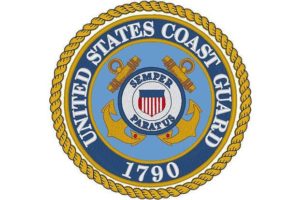 Tattoos or brands anywhere on the body that promote racism/ discrimination, indecency, extremist or supremacist philosophies, lawlessness, violence, or sexually explicit material are prohibited.
Tattoos or brands anywhere on the body that promote racism/ discrimination, indecency, extremist or supremacist philosophies, lawlessness, violence, or sexually explicit material are prohibited.
- Racist or discriminatory tattoos or brands are those that advocate the degradation of a person based on race, ethnicity, national origin, or gender.
- Indecent or sexually explicit tattoos or brands are those that contain a visual image, the dominant theme of which depicts or promotes graphic nudity, including sexual activities or organs, in a lustful way. Tattoos featuring fully exposed nudity are prohibited.
- Extremist tattoos or brands are those that depict or promote extremist activities or organizations that advocate hatred, intolerance, or lawlessness (e.g., terrorist groups, neo-Nazis, skinheads, outlaw gangs, Confederate Flag, extreme political organizations with violent histories). Because some extremist/criminal groups and organizations exploit popular symbols (e.g., cartoon characters), care must be taken in evaluating such tattoos or brands so as not to implicate members who may have selected the tattoo or brand based on its artistic value rather than a hidden meaning. In these cases, a determination will be made based on the totality of thematic elements expressed by tattoos or brands elsewhere on the body.
- Tattoos or brands labeled violent or promoting lawlessness are those that depict extreme graphic violence, profanity, glorifications of drug culture, or markings that can reasonably be interpreted as anti-government in nature
Location
No tattoo or brand, of any type, is authorized on the head, face, neck, or hands. The dark blue Coast Guard T-shirt collar shall be the reference point for the back and sides of the neck; i.e., no tattoo or brand may be visible above the collar of the T-shirt on the neck. In the case of a tattoo or brand very near the collarbone, a final evaluation shall be made to ensure that no tattoo or brand is visible when wearing a v-neck undershirt and an open collar shirt. The wrist bone shall be the reference point for tattoos or brands on the hands.
No tattoos or brands shall be visible below the wrist bone.
Size
Excessive tattooing or branding is defined as that which results in more than 25% of an exposed limb (arm/leg) being adorned and is not authorized. The exposed area shall be regarded as the zone between the member’s elbow and wrist or the knee and the ankle. A complex tattoo (mural, serpentine, etc.) that dominates a given area shall be regarded as full coverage for the purpose of determining excessiveness, regardless of any un-tattooed area within the larger picture. Coverage shall be determined by visual approximation.
The measuring of individual limbs is not intended or desired. In the case of branding, no more than one brand, not to exceed 4” x 4”, may appear anywhere on the body.
Cosmetic
The Coast Guard’s policy on tattoos does not forbid cosmetic tattooing – cosmetic tattooing refers to medical or surgical procedures conducted by licensed, qualified medical personnel. For example, an individual may be medically authorized a tattoo on scar tissue that creates a noticeable gap in an eyebrow line.
The Coast Guard’s policy also addresses Mutilation, Dental Ornamentation, and Body Piercing.
Mutilation
Intentional alterations and / or modifications to a member’s body (e.g. scarring, excessive ear piercing / stretching, tongue splitting, beneath the skin decorative implants, decorative tooth plating / engraving, etc.) are not authorized. This does not include traditional elective medical procedures (e.g., teeth straightening, breast augmentation, cosmetic plastic surgery, etc.)
Dental ornamentation
The use of gold, platinum caps (permanent or removable) for purposes of ornamentation is prohibited. Teeth, whether natural, capped or veneered, will not be ornamented with designs, jewels, initials, etc. The unnatural shaping of teeth for non-medical reasons is prohibited.
Body Piercing
No piercing, other than those for earrings (as described inCoast Guard Uniform Regulations, COMDTINST M1020.6 (series), shall be made through the ear, nose, tongue, chin, eyebrow, or any other body part that would be visible while in any uniform. This prohibition applies to male and female members alike and is specifically intended to limit the less than military appearance associated with vacant holes in the face and other exposed areas of the body. Other piercings concealed by the uniform (such as navel and nipples) are strongly discouraged due to the potential for infection and medical complications.
Under no circumstance shall such concealed piercing and accompanying jewelry be visible through, or interfere with, the professional appearance of the member in uniform, nor shall such jewelry be visible while onboard a Coast Guard unit.
(from Commandant Instruction [COMDINST] M1000.1– Coast Guard Tattoo, Body Marking, Body Piercing and Mutilation Policy, 17 Jun 2005)
Source: https://www.thebalancecareers.com/tattoo-body-art-and-brands-policy-coast-guard-3356732